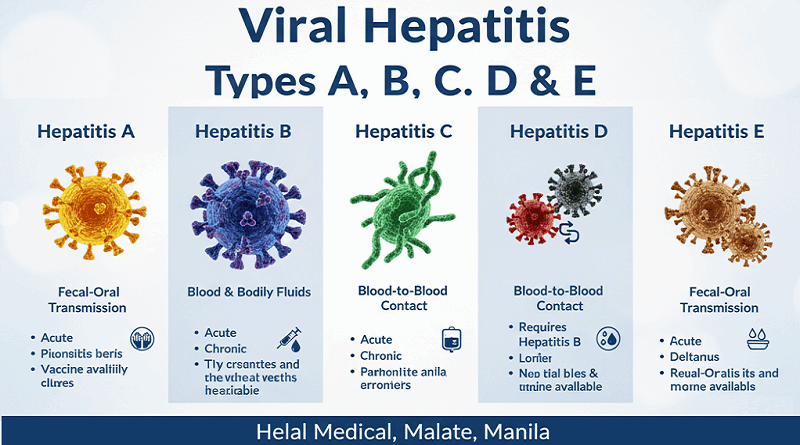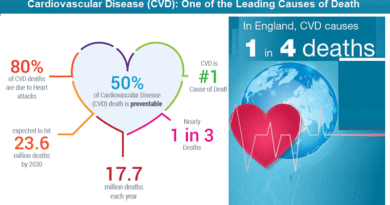Viral Hepatitis Types A, B, C, D & E: Latest Diagnosis & Treatment 2025
Viral hepatitis includes types A, B, C, D, and E. It presents a complex global health challenge. The latest breakthroughs focus on achieving a “functional cure” for chronic infections.
are categorized by their transmission route and chronicity. Hepatitis A and E spread through the fecal-oral route (contaminated food/water). They cause acute (short-term) infections. These infections typically resolve without specific treatment. In contrast, Hepatitis B, C, and D spread via blood and bodily fluids. This includes sexual contact, sharing needles, or mother-to-child during birth. These types often lead to chronic (lifelong) infection. They can cause liver cirrhosis and cancer. Hepatitis D is unique, as it can only infect a person already infected with Hepatitis B.
Latest diagnostic strategies emphasize universal screening. The 2020 CDC guidance recommends one-time HCV screening for all adults. Diagnostic strategies also include advanced non-invasive fibrosis assessment like transient elastography that replaces invasive liver biopsies.
The landscape of viral hepatitis Treatments
It is rapidly evolving in 2025. For Hepatitis C (HCV), the cure rate is now over 95%. This is achieved using Direct-Acting Antivirals (DAAs) in a short, oral course of 8–12 weeks. The focus for Hepatitis B (HBV) and Hepatitis D (HDV) is on developing next-generation agents. The goal is to move beyond lifelong suppression to a functional cure. This includes clinical trials for therapeutic vaccines, RNA-based treatments, and new antiviral combinations. In the Philippines, the latest update highlights a critical challenge. Hepatitis B has high endemicity and an established universal birth dose policy. However, public vaccine hesitancy leads to low vaccination coverage. The national strategy aims to integrate simplified testing and treatment algorithms into primary care. This approach addresses low diagnosis and treatment rates. The ultimate aim is to meet the global goal of eliminating viral hepatitis as a public health threat by 2030.
Viral hepatitis is essentially inflammation of the liver caused by a viral infection. Here is a patient-friendly breakdown of how the virus damages the liver and the common symptoms you can experience:
How Viral Hepatitis Damages the Liver
Think of your liver as the body’s main factory, cleaning blood, processing nutrients, and fighting infections. The hepatitis viruses (A, B, C, D, and E) work like tiny invaders to damage this factory.
1. The Invasion and Hijacking
The viruses, especially Hepatitis B (HBV) and Hepatitis C (HCV), travel through the bloodstream to the liver. They gain entry into the liver cells (hepatocytes) and hijack the cell’s machinery to make thousands of copies of themselves.
2. The Immune System Attack
The presence of these viruses inside the liver cells alerts your immune system. Your body’s defense forces (like T-cells) rush in to destroy the infected cells to stop the virus from spreading. This necessary immune response is what actually causes the inflammation—the “itis” in hepatitis. The process is similar to a street fight that damages the surrounding buildings.
3. Acute vs. Chronic Damage
- Acute Hepatitis (A and E): With these types, your body usually mounts a strong immune response. The response is quick, clearing the virus completely within weeks or months. The liver inflammation is temporary, and most people recover fully.
- Chronic Hepatitis (B, C, and D): With these types, your immune system can’t completely clear the virus. The virus continues to replicate silently for years or even decades. The constant, low-grade immune attack causes scarring (fibrosis). Over time, excessive scarring can lead to cirrhosis (severe, permanent hardening and failure of the liver) and eventually, liver cancer.
Common Symptoms
Hepatitis is often called a “silent killer”. Many people, especially those with chronic Hepatitis B or C, have no symptoms at all for years. This is until severe liver damage has already occurred.
When symptoms do exist, they can range from mild, flu-like illness to severe distress:
| Category | Symptom | Explanation |
| Early/Flu-like | Fever, Fatigue | Often mistaken for the flu or a mild cold. Fatigue is one of the most common and persistent complaints. |
| Loss of Appetite, Nausea | The liver’s role in digestion is disrupted, making you feel sick to your stomach or unable to eat. | |
| Liver-Specific | Jaundice | Yellowing of the skin and whites of the eyes. This happens when the damaged liver can’t process bilirubin (a yellow compound) efficiently. |
| Dark Urine | Excess bilirubin is excreted by the kidneys, making the urine look very dark, sometimes like cola. | |
| Light-Colored Stool | Bile gives stool its color. When inflammation blocks bile from leaving the liver, the stool can appear pale. It may look clay-colored. | |
| Pain | Abdominal Pain | Discomfort or pain in the upper right side of the abdomen, where the liver is located. |
Important Note: If you suspect exposure or have risk factors, it is crucial to get tested. These factors include a family history of Hepatitis B, needle-sharing, or receiving blood transfusions before 1992. Testing is important even without symptoms.
Types of Viral Hepatitis
🦠 Hepatitis A
Let’s start with Hepatitis A, the mildest form. It spreads through contaminated food or water, often in places with poor hygiene.
The symptoms can feel like the flu: fever, fatigue, nausea, and sometimes yellowing of the skin and eyes. Here is the good news: most people recover completely within weeks. There’s no chronic stage. And yes – there’s a vaccine, which is highly effective.
By 2025, newer vaccines offer longer-lasting protection, especially for children in high-risk areas. Prevention is key: clean water, hand hygiene, and vaccination.
🧬 Hepatitis B
Next up is Hepatitis B, which is more serious. It spreads through blood, sexual contact, and from mother to baby during birth. It can become chronic and lead to liver damage or even liver cancer. Many people don’t show symptoms early on, which is why it’s called a “silent” infection.
But the great news? We have a very effective vaccine, and early treatment can prevent complications. As of 2025, there are long-acting antiviral medications that require fewer doses and are more convenient for patients.
🧪 Hepatitis C
Now let’s talk about Hepatitis C – one of the most serious types. It spreads mainly through blood, like from sharing needles or poorly sterilized tattoo equipment.
It often becomes chronic and can cause severe liver damage over time.
In the past, treatments were harsh and had many side effects. But now, things have changed dramatically. Modern antiviral pills (like Sofosbuvir and Velpatasvir) are highly effective. They can cure more than 95% of cases in just 8–12 weeks. These treatments come with almost no side effects. There’s still no vaccine, but promising trials are ongoing.
🧫 Hepatitis D
Hepatitis D is unusual. It only infects people who already have Hepatitis B, because it needs the B virus to survive. It’s also one of the most dangerous types, as it can accelerate liver damage. Until recently, there were few treatment options. But a breakthrough drug called bulevirtide is being used in several countries. It helps reduce the virus’s activity and improve liver health.
So, while rare, Hepatitis D is now more manageable with new treatments.
💩 Hepatitis E
Hepatitis E is similar to Hepatitis A – it spreads through contaminated water. In most people, it causes a short-term illness and goes away on its own. But it can be very dangerous in pregnancy, especially in the third trimester.
There’s no specific treatment – just supportive care. However, now, a Hepatitis E vaccine is available in countries like China, and there’s growing interest in expanding it worldwide.
⚕️ Modern Diagnostic Tools in 2025
How do we diagnose viral hepatitis types today?
We start with simple blood tests that detect the virus and your body’s response to it. Now, we also have tools like FibroScan – a quick, painless scan that measures liver stiffness and detects scarring. No need for painful liver biopsies in many cases! These advances help doctors catch liver damage early and tailor treatments better.
💊 Latest Treatments by 2025
As of 2025, treatment options have greatly improved.
- Antiviral medications are now more effective, with fewer side effects and shorter treatment times.
- There’s also exciting research into immune-based therapies that boost the body’s natural ability to fight hepatitis.
- In severe cases, liver transplants are becoming safer and more successful thanks to improved surgical techniques and post-op care.
- And shortly, gene-editing technologies can offer long-term cures, especially for Hepatitis B and D.
What is the late update about Viral Hepatitis in the Philippines?
The viral hepatitis situation in the Philippines is an urgent public health concern, with 5.7 million Hepatitis B and 400,000 Hepatitis C cases reported in 2022.
Key Updates
- High Priority:
Medical experts and the Department of Health (DOH) are calling for accelerated action. They aim to meet the 2030 elimination goal. Experts suggest the need for emergency-level efforts. - Integrated Care:
The StITCH Project (Strengthening the Integrated Care and Treatment of Hepatitis)
it’s a major initiative. It successfully integrates community-based testing and treatment into primary healthcare. This integration quickly links diagnosed patients to care. - Vaccination Challenge:
Despite a national policy, newborn Hepatitis B vaccination coverage within 24 hours of birth remains inadequate. - Strategy:
The DOH is focusing on strengthening routine immunization. It aims to embed hepatitis services into general health systems. This approach is to improve diagnosis and treatment rates.
📢 Final Thoughts & Tips
So, what can you do?
✔️ Get vaccinated – especially for Hepatitis A and B.
✔️ Practice safe hygiene and safe sex.
✔️ Avoid sharing needles, razors, or toothbrushes.
✔️ If you’re at risk, get tested.
And remember, most types of hepatitis are preventable and treatable, especially with today’s medical advances.
SUMMARY
Viral hepatitis is liver inflammation caused by five main viruses. Types A and E are acute, spreading via contaminated food/water, and usually resolve on their own. B, C, and D are chronic, spreading through blood/bodily fluids, and can lead to cirrhosis or liver cancer.
Hepatitis C is curable with oral antivirals (DAAs). The focus for Hepatitis B is shifting to a “functional cure” via new therapeutic vaccines and RNA-based drugs.
The Philippines faces a major challenge with Hepatitis B due to inadequate newborn vaccination coverage. This is true despite having a high disease burden. Global efforts prioritize universal screening and integrated primary care to eliminate the threat by 2030.
Here is a video you can watch about viral hepatitis types. If you found it helpful, please give it a thumbs up. Subscribe to the channel. Share it with someone who needs to hear this. Thanks for reading and watching – stay healthy, stay informed!




